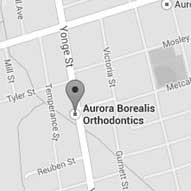
Did you ever think that braces would be in such great demand? Everybody seems to be requesting braces to correct their smiles. In the old days, only parents who were very aware of their children’s dental problems would seek a provider of braces, but now the situation is very different. Even adults nowadays are requesting braces for themselves rather than their children. This all comes with the change in standards due to social media, and everybody’s constant strive to look their best. If you are one of those self-aware people that are seeking a smile transformation through braces, then you must have a ton of questions. How do they work? How long will they take? Are there many types of braces? Where can I get braces in Toronto?
All are valid questions before you embark on the journey. We’ll try to put your mind at easy by answering most of them.
What kinds of braces are available on the market?
- Traditional metallic braces:
The old but gold metal brackets, wires and elastics. These are still considered the gold standard of orthodontic treatment, and are preferred by most orthodontists around the world since they are quick and easy, and give complete control over the teeth movement. They sure look ugly, though. - Clear braces:
An esthetic variant of the metal braces. They have the exact composition and work the same way, only the brackets are made of clear ceramic. It is still quick and easy, but looks a lot better compared to their metal counterparts. - Lingual braces:
A relatively new innovation in the field. Lingual braces go on the inside rather than the outside of the teeth, making them virtually invisible. However, they do cause some irritation to the tongue and palate. - Invisalign:
A complete game changer in the field of orthodontics. The brackets, wires and elastics give way to transparent molds called aligners. You wear the aligners on the outer surface of the teeth so that they apply pressure and move the teeth where needed.
How do braces work?
Braces – all types of braces – depend on one basic principle: Continuous low pressure. Whether you go for a fixed type of braces (metallic, clear and lingual braces) or a removable type (Invisalign), they all apply very light but constant pressure on the teeth. This sets in motion a variety of changes in the bone and gums, and the end result is the teeth moving to the new location.
How long does that take?
Every case is different, and each with its time frame. On average, braces take between 6 months and 1.5 years for most people. Some cases however are more complicated and may take north of 2 years to complete.
Who is the best provider of braces in Toronto?
If you are looking for a great orthodontist, one who is widely versed in the art of braces, look no further than Dr. Hirsch the team at Aurora Borealis orthodontics. Our office is located just around the corner at 15185 Yonge St. Aurora, ON L4G 1L8. You can call us on (888) 311-9662 to schedule your consultation.






